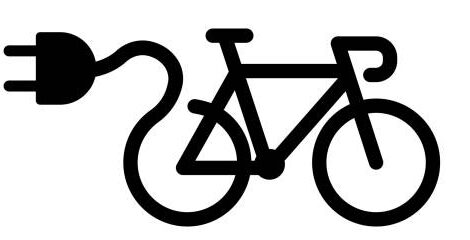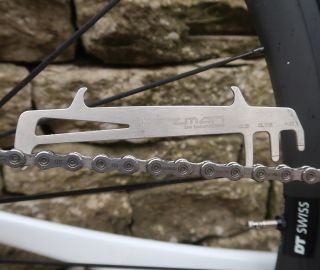Identifying the Problem: Derailleur, Cable, or Shifter?
Learning how to fix a gear on a bike often begins with accurate diagnosis. Begin by visually inspecting the bicycle’s rear and front derailleurs. Look for any obvious damage, such as bends or misalignment. Carefully examine the gear cables. Check for fraying, stretching, or kinks. Next, test the shifters. Ensure they move freely and accurately. A derailleur problem might show as inconsistent shifting or inability to shift into certain gears. The derailleur may be bent or misaligned. Cable issues often result in sluggish shifting or a complete lack of shifting response. The cable might be frayed, stretched, or improperly routed. Problems with the shifters usually manifest as sticking, imprecise shifting, or a lack of response. The shifter might be dirty or internally damaged. Knowing how to identify these issues is crucial for effective repair. Visual aids can greatly assist in identifying problems. Images comparing properly functioning components to damaged ones are invaluable. Diagrams illustrating the routing of the cables are beneficial for troubleshooting. This initial assessment guides the next steps in your gear repair process. Understanding how to properly inspect these components helps determine if the problem lies within the derailleur, the cable, or the shifter itself. This is the first step in learning how to fix a gear on a bike effectively. Identifying the root problem is essential before you can proceed with any fixes.
To further diagnose the issue, consider the symptoms. Does shifting feel sluggish? Is it completely unresponsive? Or are you unable to shift into certain gears? These symptoms will narrow down the area requiring attention. If shifting is generally sluggish, the cable or cable housing may be the culprit. Inspect the cable for fraying or kinks. Look for rust or debris within the housing. If shifting is completely unresponsive, then the cable may be broken or the derailleur may be significantly damaged or misaligned. Difficulty shifting into certain gears is usually an indication that derailleur adjustment is needed. Limit screws may need adjustment. The barrel adjuster can also be fine-tuned to improve shifting accuracy. Knowing these correlations between symptoms and potential problems is key to successful bicycle gear repair. How to fix a gear on a bike involves careful observation and deduction. The symptoms provide significant clues. This knowledge, combined with visual inspection, enables accurate diagnosis.
Remember, learning how to fix a gear on a bike is a process. Begin with a thorough visual inspection. Pay close attention to the derailleurs, cables, and shifters. Assess any visible damage or irregularities. Then, test the shifting mechanism to observe the responses. Correlate the symptoms with the visual inspection findings. This systematic approach will pinpoint the source of the problem. Once the problematic area is identified, you can proceed to the appropriate repair techniques. This detailed approach provides a solid foundation for fixing your bike’s gears. The ability to pinpoint the specific problem is paramount for effective repair. This detailed diagnosis helps prevent unnecessary repairs and wasted time.
Adjusting the Derailleur: Fine-Tuning for Smooth Shifting
Precise derailleur adjustment is crucial for smooth gear changes. To learn how to fix a gear on a bike, begin by understanding the limit screws. These screws, located on both the front and rear derailleurs, control the derailleur’s range of motion. The high and low limit screws prevent overshifting, ensuring the chain stays on the cassette and chainrings. Adjusting these screws involves carefully turning them clockwise (to decrease the range) or counter-clockwise (to increase the range), while observing the derailleur’s position and chain movement. Small adjustments are key to avoid excessive changes. Visual aids, such as images showing the location of these screws and their effect on the chain’s position, are invaluable in mastering this technique. Images showing how the derailleur interacts with the cassette and chainrings further illustrate how the limit screws precisely control shifting.
Beyond the limit screws, fine-tuning shifting often involves using the barrel adjuster. This small knob, usually located on the cable housing near the derailleur, allows for minor cable tension adjustments. To learn how to fix a gear on a bike effectively, use the barrel adjuster to make small, incremental changes, testing the shifting performance after each adjustment. Turning the barrel adjuster clockwise tightens the cable, potentially improving shifting to higher gears. Conversely, turning it counter-clockwise loosens the cable, often improving shifting to lower gears. The barrel adjuster offers a precise way to make those subtle adjustments to optimize shifting across the entire gear range, solving many common shifting problems. Remember to always inspect the derailleur’s alignment to ensure smooth operation; a misaligned derailleur can significantly impact shifting performance, regardless of cable adjustments.
For optimal performance, ensure both the front and rear derailleurs are properly aligned. A properly aligned derailleur is essential for smooth and efficient gear changes. Improper alignment can lead to difficulty shifting, chain drops, and even potential derailleur damage. Visual inspection often reveals misalignment; however, a dedicated derailleur alignment tool can help provide a more accurate assessment and allow for adjustments to perfectly align the derailleur with the cassette and chainrings. Mastering how to fix a gear on a bike also includes knowing how to properly align the derailleur, which directly affects shifting quality. This alignment, coupled with the precise use of the limit screws and barrel adjuster, ensures smooth and trouble-free gear changes, maximizing the bicycle’s performance.
Cable Maintenance: Replacing or Lubricating the Cable and Housing
Regular cable and housing maintenance is crucial for smooth gear shifting. Inspect the gear cables for fraying, corrosion, or kinks. A frayed cable significantly impacts shifting performance. Corrosion weakens the cable, leading to poor shifting. Kinks restrict cable movement, causing shifting difficulties. The housing, protecting the cable, should also be checked. Cracks or damage to the housing compromise its protective function. If the cable or housing shows significant wear, replacement is recommended. Learning how to fix a gear on a bike often involves this step.
Replacing the gear cable and housing involves several steps. First, use appropriate tools to remove the old cable and housing from the bike. Shift to the smallest gear at both the front and rear. Next, carefully feed the new cable through the housing, ensuring correct routing. This often involves threading it through derailleur guides and frame tubes. Once routed, install the new cable into the shifter and derailleur. Tighten the cable appropriately, following the instructions for your specific derailleur model. Adjust barrel adjusters on the cable to fine-tune shifting. Proper cable tension is vital for optimal performance and learning how to fix a gear on a bike efficiently.
Lubricating the cable and housing improves shifting and extends their lifespan. Apply a specialized bicycle cable lubricant to the cable before inserting it into the housing. This reduces friction and ensures smooth operation. Periodically apply lubricant to the housing’s outer surface as well. This lubrication helps prevent corrosion and maintains a smooth shift. Regularly check the cables and housing. This preventative maintenance extends their longevity, ultimately preventing costly and time-consuming repairs. Knowing how to fix a gear on a bike efficiently involves proactive maintenance, including cable lubrication. Addressing cable issues promptly prevents larger problems later. Remember, a well-maintained cable system ensures reliable and precise shifting. How to fix a gear on a bike effectively relies on proper cable maintenance.
Shifter Troubleshooting: Addressing Sticking or Unresponsive Shifters
Shifter problems can hinder smooth gear changes. To effectively troubleshoot, one must first determine if the issue stems from a mechanical problem or an internal component failure. Inspect the shifter for any visible damage, such as cracks or broken parts. Check for smooth movement. Does the shifter feel stiff or sluggish? This often indicates a need for cleaning and lubrication. Knowing how to fix a gear on a bike often involves understanding the shifters.
Cleaning shifters involves removing accumulated dirt and grime. Use a degreaser and a brush to clean the shifter thoroughly. Pay close attention to moving parts. After cleaning, apply a light lubricant, such as bicycle-specific chain lubricant, to the moving parts. This lubrication will facilitate smoother shifting. If the shifter still feels sticky or unresponsive after cleaning and lubrication, internal damage might be the cause. This usually requires professional repair or replacement, depending on the shifter’s design and the extent of the damage. In some cases, you can access and clean internal parts of the shifter yourself; always refer to your bike’s manual for specific instructions on disassembling and reassembling the shifter. Remember, improperly disassembling the shifter can cause further damage.
Another common shifter issue is cable tension. Incorrect cable tension can lead to inconsistent shifting or inability to shift into certain gears. Adjust the barrel adjuster on the shifter cable to fine-tune the cable tension. Turn the barrel adjuster to increase or decrease tension, testing the shifting after each adjustment until optimal performance is achieved. If adjustments do not solve the problem, the cable itself might need to be replaced. Inspect the cable for fraying, corrosion, or kinks. A damaged cable needs replacement to ensure smooth shifting. Replacing the cable involves routing it correctly through the shifter and derailleur. Understanding how to fix a gear on a bike often involves resolving shifter issues. This requires attention to detail and a methodical approach to troubleshooting.
Fixing a Bent Derailleur Hanger: Straightening or Replacement
A straight derailleur hanger is crucial for precise gear shifting. A bent hanger misaligns the derailleur, leading to poor shifting or the inability to shift gears altogether. Learning how to fix a gear on a bike often involves assessing the derailleur hanger. Begin by visually inspecting the hanger for any bends. Look closely at its connection to the frame. Even slight bends can affect performance. A derailleur hanger alignment tool provides a more precise assessment. This tool helps determine the extent of the bend. It also ensures proper alignment after any adjustments or replacement.
If the bend is minor, careful straightening might be possible. Use a suitable tool, applying gentle pressure to slowly return the hanger to its original shape. Avoid excessive force, which could cause further damage or breakage. Success depends on the material and severity of the bend. Some materials can be reformed, while others might require replacement. Remember this is part of learning how to fix a gear on a bike effectively.
Replacing a bent derailleur hanger is often the more reliable solution. A bent hanger can weaken the metal and cause it to break easily, even with seemingly minor impacts or collisions. This could lead to further complications and additional repairs. Choosing the correct replacement is essential. The hanger must be compatible with your bike’s specific frame and derailleur model. Incorrect hangers may cause mechanical problems, including alignment issues. The bike’s manufacturer’s information or a professional bike shop can confirm the correct part. Replacing the hanger involves removing the old one and securing the new one using the appropriate fasteners. Always ensure proper alignment after installation to optimize shifting performance and learn how to fix a gear on a bike thoroughly. This step is critical in restoring smooth shifting and avoiding future damage.
Cleaning and Lubrication: Maintaining Optimal Gear Performance
Regular cleaning and lubrication are crucial for smooth and efficient shifting. To learn how to fix a gear on a bike effectively, preventative maintenance is key. Begin by cleaning the derailleur, chain, and cassette. Use a degreaser specifically designed for bicycle components. Apply the degreaser generously, then use a brush or rag to scrub away dirt, grime, and old lubricant. Thoroughly rinse the components with water and allow them to dry completely before applying lubricant. A clean, dry surface ensures proper lubricant adhesion and prevents contamination. This process is vital for maintaining the longevity of these crucial bike parts. Neglecting this step can quickly lead to increased wear and tear, potentially resulting in the need for more extensive repairs.
Applying lubricant correctly is just as important as cleaning. Use a bicycle-specific chain lubricant. Apply a small amount to each link of the chain, ensuring even coverage. Wipe off any excess lubricant to prevent attracting dirt. Lubricate the derailleur pivots as well, using a light machine oil or a specific derailleur lubricant. This helps to ensure smooth movement and prevents corrosion. For the cassette, a light application of lubricant on the individual cogs is sufficient. Remember, the goal is to maintain smooth shifting and reduce friction, not to drown the components in oil. Over-lubrication can lead to dirt accumulation, hindering performance. Following these steps will help you keep your drivetrain running smoothly for longer. Regular maintenance, including cleaning and lubrication, is a critical aspect of learning how to fix a gear on a bike. It’s a proactive approach to prevent future problems.
Knowing how to fix a gear on a bike efficiently involves understanding the importance of proper tools and techniques. Use a soft-bristled brush to clean the chain and cassette thoroughly. A parts cleaner can remove stubborn dirt and grime. For stubborn grease, a degreaser is ideal. Pay close attention to the derailleur pulleys, as they can accumulate grime. Clean them carefully using a toothbrush or small brush. Proper cleaning extends the lifespan of your bicycle components. Regular maintenance prevents premature wear. It also contributes to more efficient power transfer. This leads to improved performance while riding. Consistent upkeep is the best way to ensure smooth shifting. This process is essential for maintaining your bike’s overall performance.
Chain Problems: Addressing Worn, Rusty, or Stiff Chains
A worn, rusty, or stiff chain significantly impacts shifting performance. Learning how to fix a gear on a bike often involves addressing chain issues. Regularly inspect your chain for signs of wear, such as rust, stiff links, or excessive stretching. A worn chain can cause skipping, poor shifting, and increased wear on other drivetrain components. To determine chain wear, use a chain wear tool. This tool precisely measures chain elongation. Replace the chain when it exceeds the manufacturer’s recommended wear limit. Ignoring chain wear can lead to costly repairs down the line. This is because a worn chain stretches and puts stress on other parts of the bike.
Replacing a chain is a relatively straightforward task, although knowing how to fix a gear on a bike efficiently involves understanding this process. First, you’ll need a chain breaker tool to remove the old chain. This tool allows you to carefully detach the pins connecting the chain links. Once removed, measure the new chain to ensure it’s the correct length. This is easily done by installing the chain on the drivetrain and taking out the necessary links to achieve the right length. Always make sure you install the new chain properly; the correct alignment is crucial for smooth operation. The master link provided with the new chain is then attached to complete the loop. Proper chain installation ensures optimal shifting and prevents premature wear on your cassette and chainrings. To successfully address the question of how to fix a gear on a bike, chain maintenance is an essential step.
Beyond wear, rust can also hinder shifting. Regularly cleaning your chain with a degreaser and lubricating it with appropriate chain lubricant helps prevent rust and prolong its lifespan. Cleaning removes dirt and grime, preventing excessive wear. Lubrication reduces friction, creating a smoother shifting experience. These simple steps dramatically improve your bike’s performance and answer how to fix a gear on a bike by proactively addressing potential problems. Remember, a properly maintained chain is crucial for optimal gear shifting. Ignoring this critical aspect can lead to more significant problems later. Consistent chain maintenance is key to maintaining overall drivetrain health and the smooth, reliable shifting you need.
When to Seek Professional Help: Recognizing Limits of DIY Repair
While this guide provides comprehensive instructions on how to fix a gear on a bike, some situations require the expertise of a professional bicycle mechanic. Severe damage to the derailleur, often caused by impact, may necessitate replacement or intricate repair beyond the scope of basic tools. Internal shifter problems, particularly those involving electronic shifting systems, usually demand specialized diagnostic equipment and knowledge. Similarly, frame issues affecting gear alignment or cable routing are best addressed by experienced professionals. Attempting complex repairs without proper training can potentially worsen the problem, leading to further damage and increased repair costs. Knowing your limitations is key to successful bicycle maintenance.
Understanding how to fix a gear on a bike involves assessing the problem accurately. Issues stemming from a bent derailleur hanger, for example, might seem simple. However, improper straightening could permanently damage the hanger. This requires careful examination and sometimes, replacement is essential. Another factor to consider when learning how to fix a gear on a bike is the age and type of components. Older or less common parts may not be readily available, demanding a professional’s resourcefulness in sourcing or repairing them. Remember, preventative maintenance, detailed in earlier sections, can significantly reduce the need for extensive repairs. Regular cleaning, lubrication, and cable checks are crucial aspects of preventing more serious issues.
This guide on how to fix a gear on a bike empowers cyclists to tackle common shifting problems. By following the steps outlined, many gear issues can be resolved efficiently. However, recognizing when to seek professional assistance is vital for preventing costly mistakes and ensuring your bike functions optimally. Regular inspections and a proactive approach to maintenance are the cornerstones of long-term bicycle health and enjoyment. Prioritizing preventative maintenance significantly reduces the likelihood of needing major repairs, helping to keep your bike running smoothly for years to come. Remember, a well-maintained bike is a happy bike, and a happy bike leads to happy rides.




